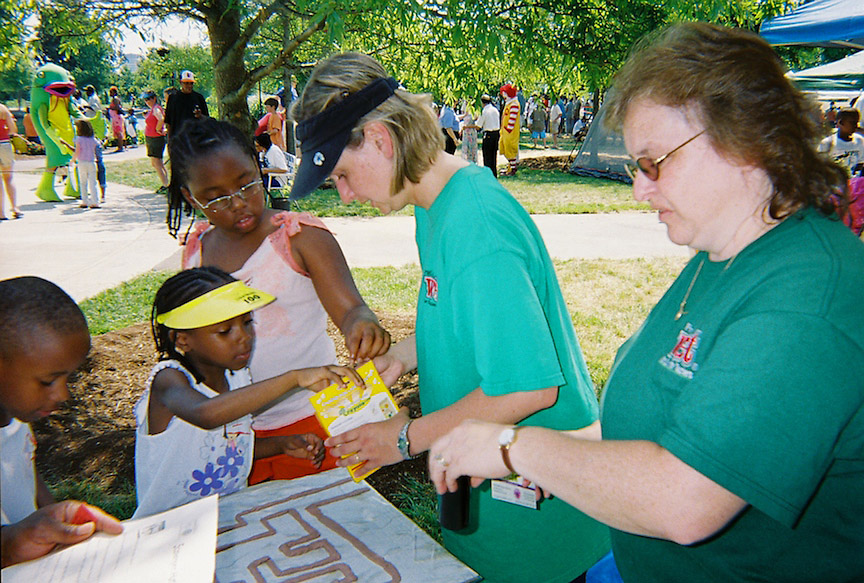 Clarksville, TN – In 2002, as Dr. Ben Stone neared the end of his time as founding director of the Center of Excellence for Field Biology at Austin Peay State University (APSU), he shared his ruminations about our relationship with nature.
Clarksville, TN – In 2002, as Dr. Ben Stone neared the end of his time as founding director of the Center of Excellence for Field Biology at Austin Peay State University (APSU), he shared his ruminations about our relationship with nature.
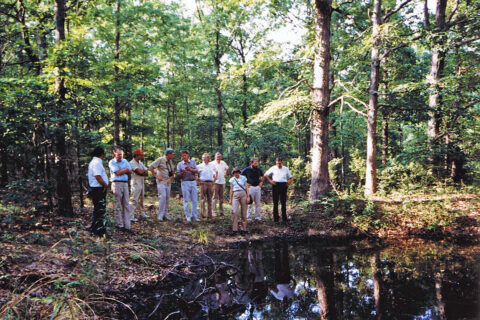
“I believe that the best thing a human being can do is try to increase understanding of nature, the entire reality – the all – around us,” Stone wrote in “Land Between the Lakes, Kentucky and Tennessee: Four Decades of Tennessee Valley Authority Stewardship.” “This can be done best by the techniques of the natural sciences. … One must observe nature.
“To this end, the Center for Field Biology provides one of the best opportunities in Tennessee.”
In its 35th year, the center remains an opportunity for Austin Peay State University, for Clarksville and Montgomery County, and beyond. Since its inception in 1986, the center has expanded from a focus on the fauna and flora of the Land Between the Lakes to establishing a footprint across the United States, such as with the Southeastern Grasslands Initiative – which since 2017 has worked to restore thousands of acres of grasslands from Texas to New Jersey.
“As a result of the center’s activity and the funding, this center gained both a regional and international visibility,” Stone said in a spring 2021 interview. “That would never have been achieved had it not been for the state Centers of Excellence program.”
Dr. Steve Hamilton, who retired as the center’s director in May after joining as a principal investigator in 1987, agreed.
“It benefits the center, the department, the college, and the University as a whole,” he said.
Earlier this summer, Dr. Chris Gentry, professor of geosciences, was named the center’s interim director.
APSU Center’s genesis in Land Between the Lakes

The Tennessee General Assembly and Governor Lamar Alexander in 1984 announced the creation of a new “Centers of Excellence” program designed to build upon the research strengths of the state’s universities.
“Well, you have to remember how the department was before the center … it was a teaching department, and there was no time for research,” said Dr. Wayne Chester, a biology professor at Austin Peay from 1967-2008 who also served as principal investigator for the center. “One of my mentors one time, when I was in grad school, said, ‘If you’re going to teach science, you’d better do some science.”
“As a result of that early work in Land Between the Lakes, we based our center on Land Between the Lakes,” said Chester, who had performed field research in LBL since 1967.
During the summer of 1985, Stone and Chester joined Drs. Charles N. Boehms, William Ellis, Floyd Scott, and David Snyder to develop the “Proposal for the Establishment of a Center of Excellence for the Study of Flora and Non-Game Fauna of Land Between the Lakes at Austin Peay State University.”
The state established the Center of Excellence for Field Biology of Land Between the Lakes the following summer. Dr. James Fralish of Southern Illinois University at Carbondale joined Boehms, Chester, Scott, and Snyder as the center’s first principal investigators. Stone became the first director.
Early successes lead to expanded funding
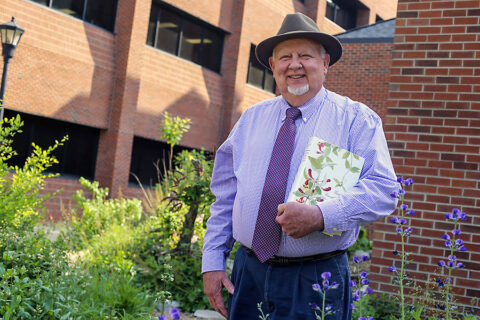
Early research included biotic inventories, community structure analyses, studies of endangered, threatened, and rare species, and various studies of the environment.
The center originally had five focus areas:
- Establish an LBL fauna and flora database.
- Establish an ecological disturbances database.
- Establish a periodical symposium centered on LBL and the lower Cumberland and Tennessee river valleys.
- Engage K-12 and college educators throughout the state in summer research and workshops.
- Engage undergraduate and graduate students in hands-on field biology research.
The center quickly succeeded at its mission and earned designation in 1989 as an “Accomplished Center of Excellence,” which expanded the center’s scope and financial base.
“I emphasized (to the committee), and this caught their attention, that this center faculty’s activity was focused on assessing the biological heritage of the state,” Stone said. “That is assessing the flora and fauna. No one had ever done that in this state until this center assumed that responsibility.”
One of the state’s goals with the centers of excellence was “to provide external funding that would, in turn, attract external funding on the national level,” Stone said. “As a result of this center faculty’s activity, we brought in several million dollars in funding by the time I retired in 2002.”
That success continued into the 21st century. The center’s current principal investigators – Drs. Dwayne Estes, Rebecca Johansen, C.M. Gienger, Stefan Woltmann, and Michelle Rogers – have secured about $3 million in external grants and contracts. And since 2017, the Southeastern Grasslands Initiative has earned more than $4.1 million in fundraising and grant money.
“The amount of money that this center has brought into this university is several million dollars,” Chester said. “And the new faculty are bringing in money. It’s sort of a snowballing effect. You start off small and once you get your name out there, it’s easier to get grants because people begin to call you.”
Added Hamilton: “We’ve recruited in these younger faculty and all of them are successful in achieving the goals of going out and getting grants, educating students.”
Research opportunities grow for faculty, students

One of the center’s original goals was engaging students in hands-on field biology research. That has been the center’s biggest success, Chester said.
“The first great benefit of the center was that it allowed faculty release time from teaching to do research, and the second important thing was it allowed money to hire students,” he said. “The most important part of the center is we involved undergraduate students and graduate students in research. Hundreds have benefitted, and some have gone on to do great things.”
In its first 10 years, the center awarded more than 200 research assistantships to students. That has continued to today with an Austin Peay State University student recently earning APSU’s first-ever National Science Foundation Graduate Research Fellowship.
Also, of the 137 presentations and 52 publications produced by the center’s current principal investigators, about 80 have included student researchers.
“This is a great way to grow scientists, to get them started,” Hamilton said. “They have all the coursework, which is more regimented and structured, but to actually get in the lab and conduct an experiment … is learning how science works, the nitty-gritty of it not just the rote memorization.”
The center, especially at a midsized university, has “provided great opportunities,” he added, “for the faculty and for the students they’ve worked with, especially in the area of field biology. Field biology at the bigger universities has become a less important element.”
Finding research opportunities nationwide
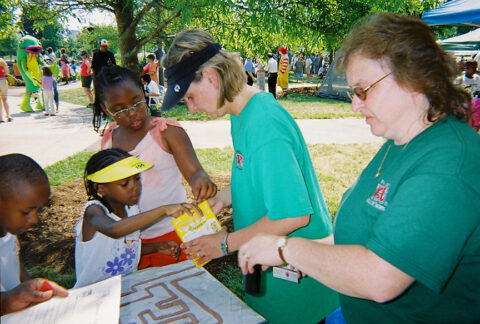
After its founding, the center also hosted senior research fellows from other universities, which allowed Austin Peay professors and students to form relationships across the region and spread awareness of APSU.
“You develop not only good colleagues, you develop friends, and they would send us students, and we would send them students, and as a result, it changed the whole outlook from the standpoint of other institutions,” Chester said. “Before that, we were a teaching school … but now Austin Peay, the biology department, is a research institution.”
The center’s current principal investigators conduct research all over the country.
“SGI operates from New Jersey to Florida out to Texas,” Hamilton said. “Chris Gienger’s research on Gila monsters is out in Clark County, Nevada. Dr. Johansen is studying fish in Kentucky. Stefan Woltmann was doing research on the BP oil spill and has done stuff on coastal birds in the Carolinas.”
Back to nature
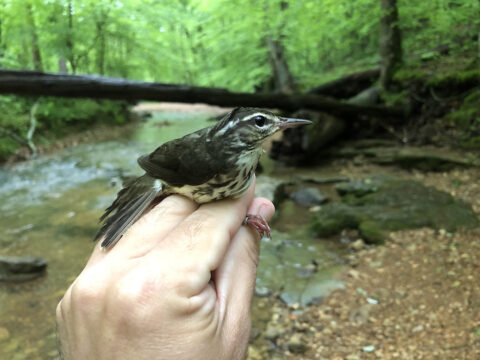
In his 2002 thoughts about the center’s achievements, Stone reflected on the synergy behind the science. At that time, the center was 16 years old and already a massive success. And Hamilton and Dr. Mack Finley recently had won two state stewardship awards for their work improving water quality for several Middle Tennessee counties.
“The center remains one of the more effective and creative approaches by the state of Tennessee to provide an environment for faculty and students to become involved in synergistic endeavors that focus upon the acquisition and translation of knowledge concerning our biological heritage,” Stone wrote.
To Learn More
- For more information about the APSU Center of Excellence for Field Biology, visit apsu.edu/field-biology.
- Also, the center’s databases and publications are online.
Early CEFB Timeline
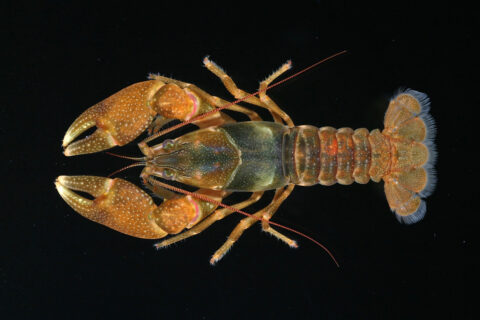
- Summer 1985: A writing team presented to the state legislature the “Proposal for the Establishment of a Center of Excellence for the Study of Flora and Non-Game Fauna of Land Between the Lakes at Austin Peay State University.”
- Summer 1986: The state provided $375,000 in funding that established APSU as the Center of Excellence for Field Biology of Land Between the Lakes. The center’s first principal investigators from APSU were Drs. Charles Boehms, Wayne Chester, Floyd Scott, David Snyder, and Ben Stone, the center’s first director. Dr. James Fralish of Southern Illinois University at Carbondale also was on the team.
- 1987-89: The center published the collages “Wildflowers of LBL,” “Birds of LBL” and “Amphibians and Reptiles of LBL,” which were widely distributed to elementary and secondary schools across the country and posted at rest stops in Kentucky and Tennessee.
- March 11th-12th, 1988: The center co-hosted the first of 14 annual and bi-annual symposia that examined the natural history of the lower Tennessee and Cumberland river valleys.
- Fall 1989: The center was designated as an “Accomplished Center of Excellence,” which expanded the scope and financial base for the center.
- March 1991: The center’s research supported an effort to persuade UNESCO to approve LBL as one of seven new biosphere reserves in the world.
- September 1991: The center publishes “Birds of Land Between the Lakes” field guide, the first of several books published or sponsored by the center.
- Summer 1996: The center celebrates its first 10 years, in which the center produced 101 journal publications, 149 papers, reports and presentations, three curriculum guides, seven books, two atlases, and three full-color posters depicting the reptiles, amphibians, birds, and wildflowers of Land Between the Lakes. At the time, the center also had awarded more than 200 research assistantships to students.
- 1997: The center, in collaboration with the EPA and the Tennessee Department of Agriculture Nonpoint Source Pollution Control, established Water Education for Tennessee Teachers Project (WETT, later renamed Project WET Tennessee) at the center.
- July 12th, 2000: CEFB principal investigators Drs. Mack Finley and Steve Hamilton win two stewardship awards from the state for their work to improve water quality for several Middle Tennessee counties, work that started shortly after the center launched.
Recent CEFB Successes
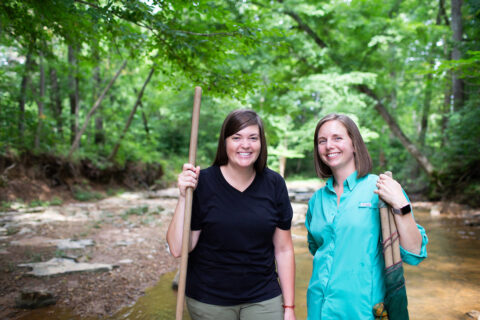
The center’s current principal investigators (Dwayne Estes, Rebecca Johansen, C.M. Gienger, Michelle Rogers, and Stefan Woltmann) are responsible for the following achievements, starting in 2008:
- 137 presentations (about half that included students).
- 52 publications (about a dozen that included students).
- About $70,000 in internal grants.
- About $3 million in external grants and contracts.
- Rogers is the state’s coordinator of Project WET Tennessee, which has provided over 360 professional development workshops and trained over 7,800 Tennessee educators since 2005.
- Estes is executive director of the Southeastern Grasslands Initiative and helped establish SGI in 2017. SGI has earned more than $1.6 million in philanthropic and corporate fundraising and more than $2.5 million in federal, state, and municipal grants.
- Two Socrates Award for Excellence in Teaching winners, Johansen and Rogers.
- One Richard M. Hawkins award winner, Estes, awarded for noteworthy contributions to scholarship or creative activity.
- One Tennessee Board of Regents Fellow, Johansen.
- One American Society of Ichthyologists and Herpetologists Board of Governors, Johansen.
- Student awarded APSU’s first-ever National Science Foundation Graduate Research Fellowship.

